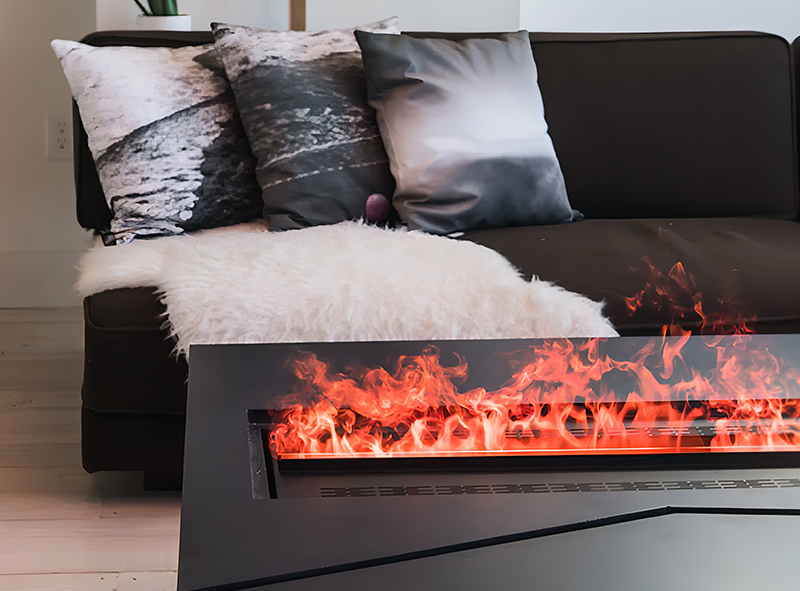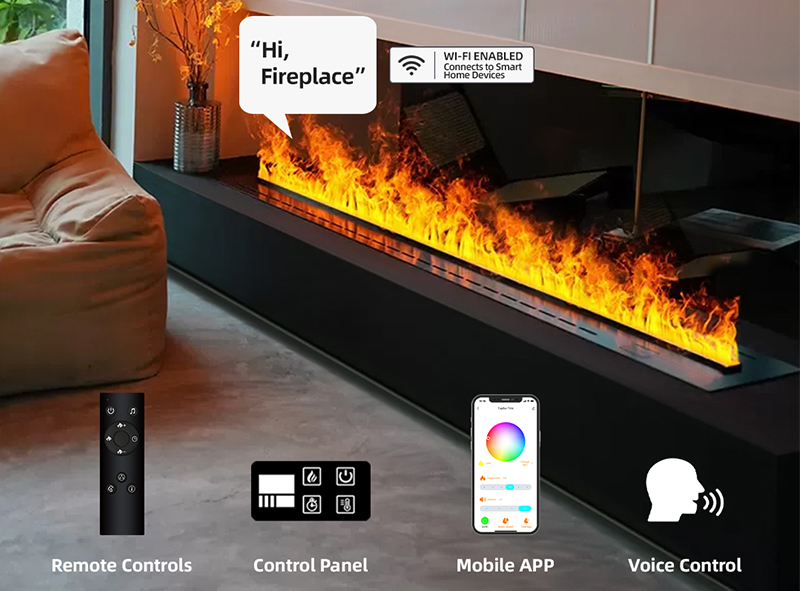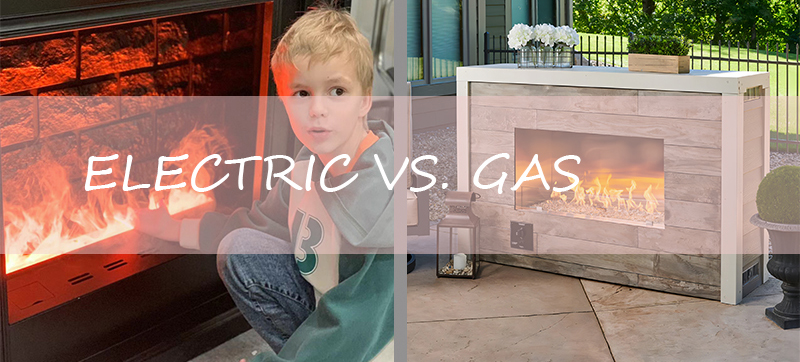Do electric fireplaces need ventilation?
On chilly winter nights, the warmth emitted by a fireplace is something to look forward to. However, when considering installing a fireplace, an important factor to consider is ventilation. Traditional wood or gas fireplaces usually require ventilation systems to remove the exhaust gases generated by combustion, but do electric fireplaces need ventilation?
Key Points:
· No, electric fireplace heaters do not require ventilation.
· Electric fireplaces do not emit any toxic or harmful gases.
· Electric fireplaces are safer and more cost-effective than traditional fireplaces, both in terms of safety and maintenance costs.
· Advanced LED technology accurately replicates the burning effect of flames.
· Electric fireplaces are plug-and-play and can be moved to any corner of the room.
· The heat generated by electric fireplaces comes from electric heaters and does not require the burning of any materials.
· Electric fireplaces are more environmentally friendly compared to traditional fireplaces.
Before addressing whether modern electric fires require ventilation during operation, let’s first understand the working principle of electric stove fireplaces to better understand why ventilation is not needed.
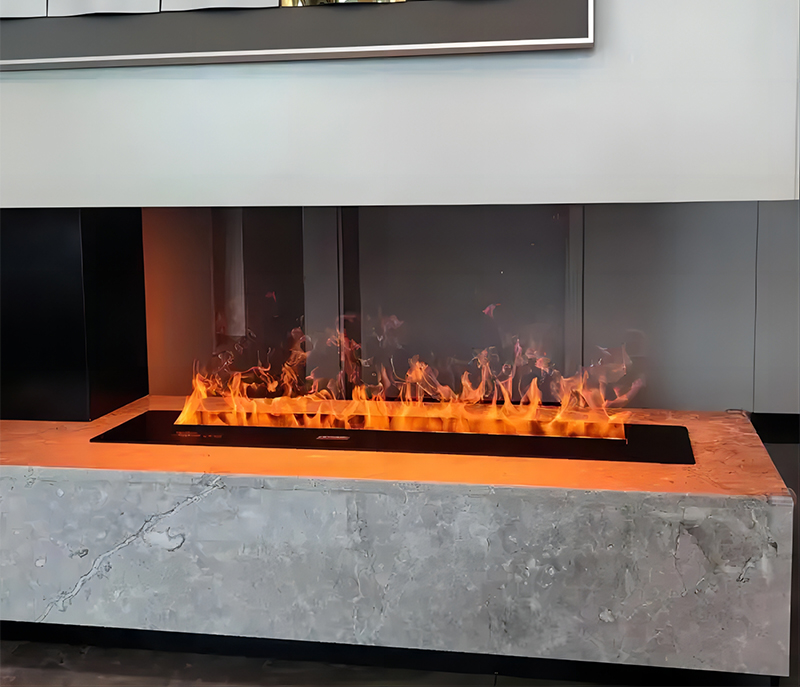
An fake fire place is a device that uses electricity to generate heat, rather than burning wood or gas to produce flames. This means that rustic electric fireplace do not need to burn any materials during use; they simply generate heat and flame effects using electricity, without producing any harmful smoke or emissions. Instead, they utilize electric heating to produce simulated flame effects and comfortable warmth, all within a closed space.
Electric Fireplaces Do Not Require Ventilation
Because flame effect electric fires do not produce smoke or harmful gases, they typically do not require ventilation systems. This means that you can install an electric fire with surround in almost any location without needing to consider the presence of chimneys or ventilation ducts. This flexibility makes electric fireplaces a preferred choice for many households, especially in situations where chimneys or ventilation systems are not available.
Advantages of Electric Fireplaces
· No emission of harmful substances or gases
· Lower maintenance costs
· No need for chimneys or flues
· Easy installation
· No need to worry about fire hazards
· Customizable flames, smart operation
Comparison Between Electric Fireplaces and Traditional Fireplaces
Traditional wood or gas fireplaces require ventilation systems to exhaust the fumes generated during combustion, necessitating considerations for ventilation during installation and possibly requiring the installation of chimneys or ventilation ducts. In contrast, led fireplace insert do not require ventilation because they do not produce smoke or harmful gases, providing greater flexibility in installation and easier maintenance and cleaning.
· The energy efficiency conversion of electric fireplaces can reach nearly 100%, as electricity is directly converted into heat energy without any heat loss.
· The energy efficiency of gas fireplaces typically ranges from 70% to 90% and emits gases, including carbon dioxide and carbon monoxide.
· The energy efficiency of natural gas fireplaces is usually slightly higher than that of gas fireplaces and also emits gases, but to a lesser extent.
· The energy efficiency of wood-burning fireplaces is lower, generally ranging from 50% to 70%, and emissions during combustion mainly include carbon dioxide, carbon monoxide, particulate matter, and other harmful substances.
Best Product
Our company is proud to introduce the Panorama Mist Series mist fireplace, which combines LED projection, water vapor, and optical reflection technologies to simulate the shape, color, and movement of flames. With precise design and control, it produces realistic flame effects without generating heat from actual flames, ensuring safety and preventing burns while providing warmth and comfort. There is no need to worry about ventilation issues because no materials are burned; simply unpack the fireplace, plug in the power cord, and connect it to a standard 220V outlet.
Installation and Usage Recommendations
Although electric fireplace heaters do not require ventilation and are technically safe to operate overnight, safety is always the top priority. When installing an indoor electric fireplace, be sure to follow the manufacturer’s instructions and safety guidelines and connect it to a standard power source. Ensure that there is enough space around the fireplace and keep it away from flammable materials such as sofas. Also, avoid prolonged overloading of the artificial fireplace, as prolonged operation may cause internal components to overheat, triggering the overheat protection device for safety. Additionally, regular cleaning and maintenance of the electric fireplace are important steps to ensure its safe operation.
· Electric fireplaces should not be operated continuously for more than 8 hours.
· Keep away from flammable and explosive materials.
· Check whether the body of the electric fireplace and the power cord are overheating during operation.
· Turn off the electric fireplace when not in use.
· Follow the instructions for use.
· Regularly check for signs of damage and wear.
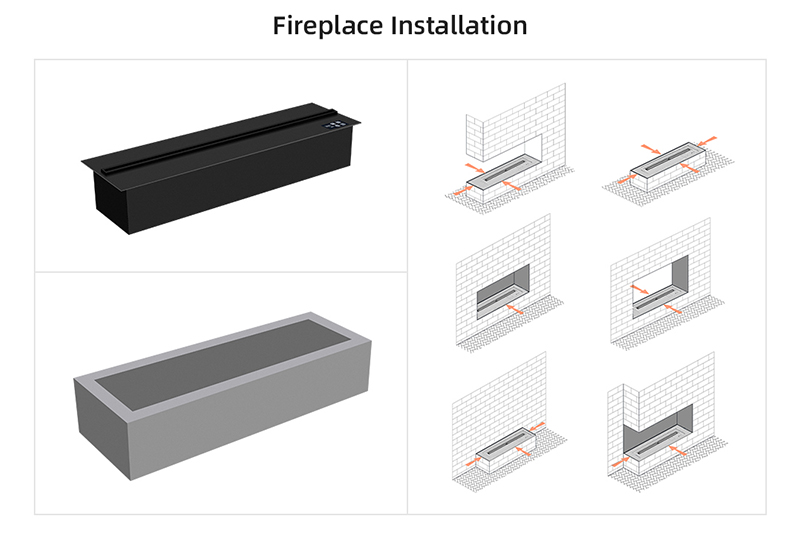 Conclusion
Conclusion
In summary, electric fireplaces typically do not require ventilation because they do not produce harmful smoke or emissions. This makes them a convenient choice for installing fireplaces in homes, as they can be placed in almost any desired location. However, even though ventilation is not required, careful installation and usage are still necessary to ensure household safety.
So, if you are considering installing an electric fireplace in your home, now you know.

Post time: Apr-27-2024






